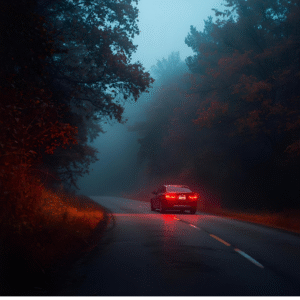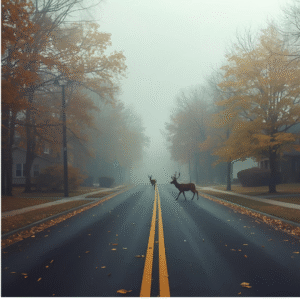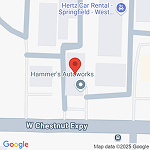Autumn brings crisp air, colorful leaves, and plenty of scenic drives, but it also brings added risks on the road. From darker commutes to wildlife crossings, fall driving can quickly turn dangerous if you’re not prepared.
Knowing the seasonal hazards to watch for and how to respond if you’re in an accident can make all the difference in keeping you safe and ensuring your vehicle is properly repaired.

Fall Driving Hazards You Need to Know
Fall is one of the most beautiful times to be on the road, but behind the beauty, there are challenges drivers face that aren’t as common during other seasons. Understanding these hazards can help you anticipate risks before they turn into collisions.
Shorter Days and Longer Nights
With daylight savings ending and the sun setting earlier, more people are driving in the dark. Night driving reduces visibility and makes it harder to spot pedestrians, cyclists, or animals.
For example, a driver heading home from work might not notice a jogger wearing dark clothing until it’s too late to stop safely. Dirty or misaligned headlights only make this risk worse.
Wet Leaves and Slick Roads
Everyone loves the sight of colorful leaves lining the street, until rain turns them into slippery hazards. Wet leaves can be as slick as ice, especially during the first rain after a dry spell.
Imagine braking suddenly at an intersection only to slide through because the leaves beneath your tires gave way. They also cover lane markings, potholes, and other dangers, which can cause fender benders or single-car accidents.
Fog and Morning Frost
Cooler mornings bring more fog and frost. Fog can reduce visibility to just a few feet, giving drivers less reaction time.
Frosty windshields also tempt some drivers to rush out the door with just a small cleared spot of glass, which limits visibility and raises accident risk.
These conditions are common during school drop-off times, when traffic is heavier and extra caution is needed.
Wildlife on the Move
Fall is peak deer season, and they are most active at dawn and dusk. Deer crossing signs are not suggestions—they mark areas where collisions happen often.
Swerving to avoid a deer can be just as dangerous as hitting one. Many drivers lose control and end up striking another vehicle, a fence, or even a tree.
Body damage from deer collisions is one of the most common types of fall repair work we see.

Quick Tips for Safer Fall Driving:
- Keep headlights clean and properly aimed.
- Slow down when roads are covered with wet leaves.
- Give yourself extra time on foggy or frosty mornings.
- Stay alert in rural areas and near wooded roads, especially at dawn and dusk.
What to Do If You’re in an Accident This Fall
Even with careful driving, accidents happen — especially when fall hazards are at play. Knowing what to do after a collision can keep you safe, protect your rights, and ensure your car is repaired the right way.
Step 1: Check for Safety
First, check yourself and your passengers for injuries. If possible, move your car to a safe spot away from traffic. On dark fall evenings, turning on your hazard lights is critical to making sure you’re visible to other drivers.
Step 2: Call for Help
Always call the police to report the accident. Even if the damage looks minor, a report provides valuable documentation for insurance claims. This step also ensures emergency services are dispatched quickly if someone is hurt.
Step 3: Document Everything
Take photos of the vehicles, license plates, road conditions, and surroundings. This is especially important in fall. Wet leaves, fog, or a deer crossing can all help explain how the accident occurred. Exchange insurance details, but avoid admitting fault.
Step 4: Contact Your Insurance
Notify your insurance company about the accident as soon as you can. Provide them with the photos, the police report number, and any other details you collected.
Remember: you have the right to choose your repair shop. Insurance companies may recommend one, but the decision is yours.
Step 5: Choose Certified Repairs
Even a “minor” accident can affect your vehicle’s safety systems, including sensors, airbags, or crumple zones.
Choosing an OEM-certified auto body repair shop ensures your car is restored with manufacturer-approved parts and repair processes. That means your vehicle isn’t just fixed—it’s safe for you and your family to drive again. A complete reset to factory condition.
At Hammer’s Autoworks, we see the impact of fall driving hazards every year, from deer collisions to slick-road fender benders. That’s why our team is committed to safe, OEM-certified repairs and working directly with your insurance company to make the process as stress-free as possible.

